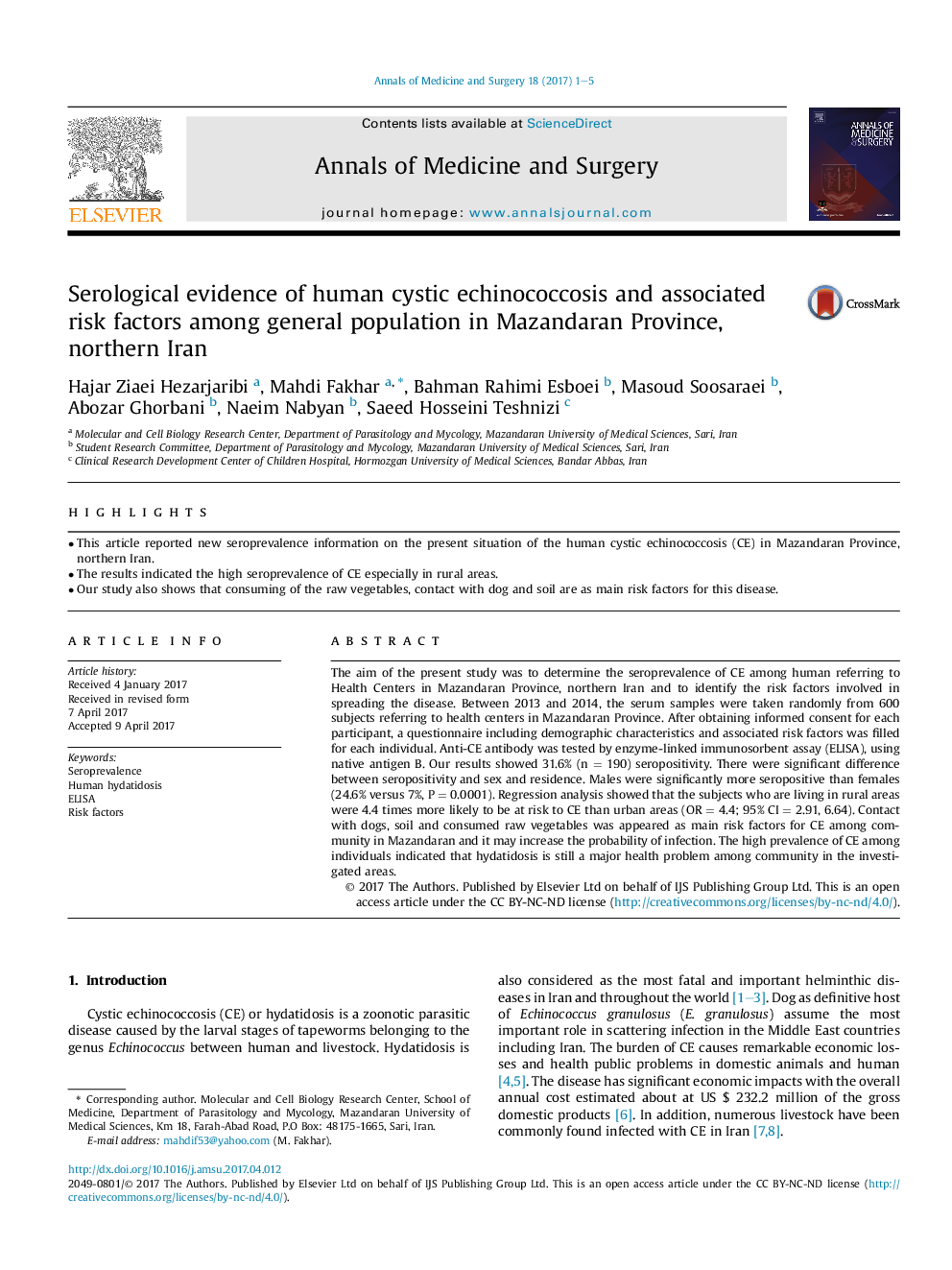| کد مقاله | کد نشریه | سال انتشار | مقاله انگلیسی | نسخه تمام متن |
|---|---|---|---|---|
| 5722928 | 1608909 | 2017 | 5 صفحه PDF | دانلود رایگان |
- This article reported new seroprevalence information on the present situation of the human cystic echinococcosis (CE) in Mazandaran Province, northern Iran.
- The results indicated the high seroprevalence of CE especially in rural areas.
- Our study also shows that consuming of the raw vegetables, contact with dog and soil are as main risk factors for this disease.
The aim of the present study was to determine the seroprevalence of CE among human referring to Health Centers in Mazandaran Province, northern Iran and to identify the risk factors involved in spreading the disease. Between 2013 and 2014, the serum samples were taken randomly from 600 subjects referring to health centers in Mazandaran Province. After obtaining informed consent for each participant, a questionnaire including demographic characteristics and associated risk factors was filled for each individual. Anti-CE antibody was tested by enzyme-linked immunosorbent assay (ELISA), using native antigen B. Our results showed 31.6% (n = 190) seropositivity. There were significant difference between seropositivity and sex and residence. Males were significantly more seropositive than females (24.6% versus 7%, P = 0.0001). Regression analysis showed that the subjects who are living in rural areas were 4.4 times more likely to be at risk to CE than urban areas (OR = 4.4; 95% CI = 2.91, 6.64). Contact with dogs, soil and consumed raw vegetables was appeared as main risk factors for CE among community in Mazandaran and it may increase the probability of infection. The high prevalence of CE among individuals indicated that hydatidosis is still a major health problem among community in the investigated areas.
Journal: Annals of Medicine and Surgery - Volume 18, June 2017, Pages 1-5
